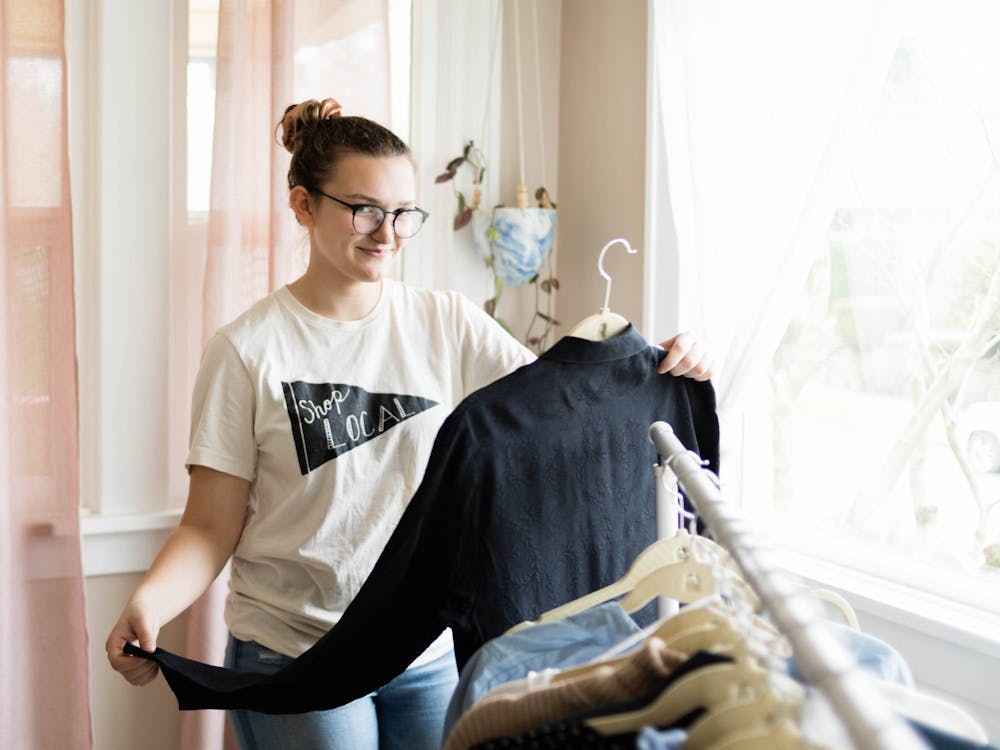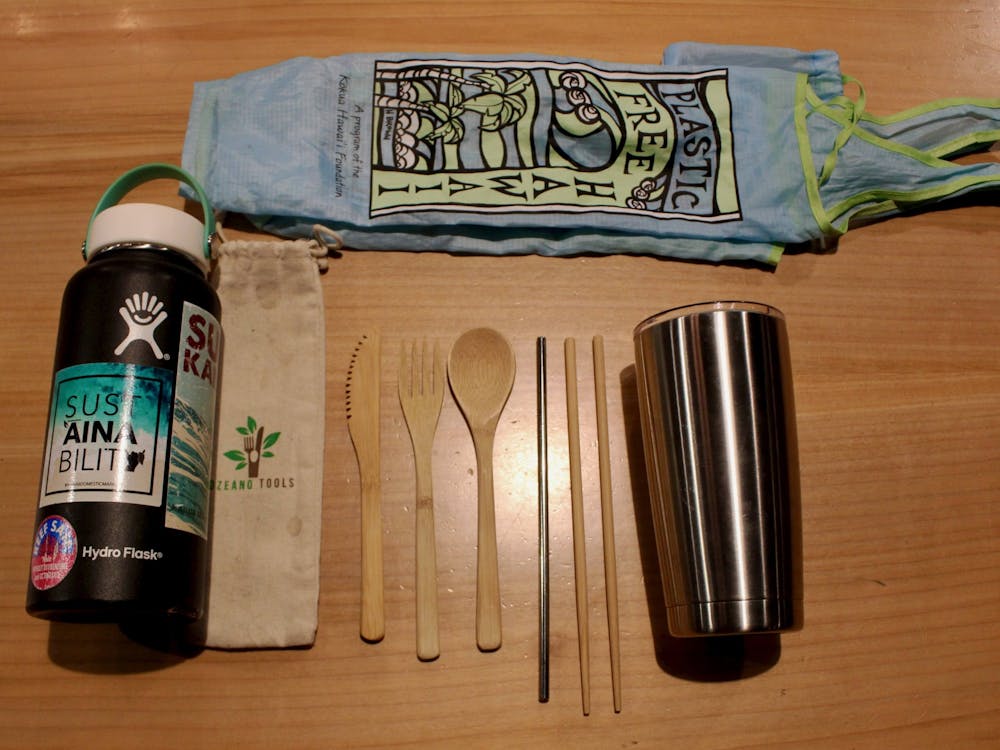We all love to shop — I know I do. To name a few of my favorite stores to shop — Forever21, Zara, Nordstrom Rack and Old Navy! I shop at these fast-fashion retailers not only for their cute styles and affordable prices but because of my curvy body shape and short frame. I have relied on shopping in-store at these companies because I like trying on the garments, touching the different fabrics while browsing through the racks, and interacting with sales associates at check-out. I also like that I can think of an outfit idea and automatically know where to purchase the garment from and how much it would cost me. However, buying cheap does come at a high cost.
Fast fashion refers to quick, inexpensive and disposable clothing based on the latest trends from the runway and celebrity influences produced by mass-market retailers. Just by checking my closet, I found that the majority of clothing has come from fast-fashion retailers. For example, this knit dress I bought on sale from Old Navy in all three colors for $15.97. Ridiculous, right?! So, what do fast-fashion retailers do to become so successful in capturing young people just like me to buy these clothes?
Fast fashion became a multi-trillion dollar industry by making us feel “out of trend” after a week. A company such as Boohoo introduced 772 new products on their online store over a week, with a daily average of 116 individual garments. Like, what?! Instead of replenishing their stock when something sells out, they would replace these items with new clothes of a different style, making older clothes outdated and unfashionable, thus compelling consumers to buy more to keep up with trends. How exactly do they make money off of this?
Fast-fashion retailers have made profits by stealing or copying ideas and designs from independent artists. For example, Fashion Nova recreated Kylie Jenner’s custom-made pink Swarovski-crystal encrusted LaBourjoisie jumpsuit with a retail value of $8,000. Fashion Nova sells a replica of this jumpsuit for $35, obviously without the crystals, and more like with sequins. The challenge that independent artists face is in U.S. copyright laws, which only protects original prints and graphics, not the actual designs themselves. Ultimately, this copyright loophole allows fast-fashion brands to continue to profit from the designs of others.
Fast-fashion retailers also rely on the low-quality, high-volume business model. These retailers obtain cheap labor by outsourcing the production of their products at sweatshops, where workers are employed at very low wages for long hours in terrible conditions. In these sweatshops, women make up the vast majority of the garment workers with men in management positions. This results in physical, mental and sexual harm to women when disciplinary measures arise. It is even more difficult for women to report conflict in the workplace and to be taken seriously by management.
Working in these conditions also results in environmental impacts. Sweatshop workers are exposed to toxic chemicals every day in fiber production, dyeing, bleaching, and wet processing of the garments. About 200,000 tons of these chemicals produced to create the colors and patterns of our clothes are dumped into rivers, polluting the water, harming aquatic life and hurting the health of people who live near these river banks. Since clothing is disposed of at an unmatched rate, waste has been accumulating at already-crowded landfills with companies’ unsold clothes and clothes that we have bought and only worn for an average of three years. So, is there any room for sustainability in fast fashion?
Millennial and Gen Z shoppers like myself have become more concerned about the environment and are pushing fashion brands, especially fast fashion, to change their business models. A retailer such as H&M has become sustainability-conscious with their brand.
According to H&M’s 2018 Sustainability Report, all the cotton that H&M will use will come from more sustainable sources, and in 10 years, all of their products will come from more sustainable or recycled sources. By 2040, H&M pledges to become a 100% climate-positive company by using renewable energy and increasing energy efficiency in its operations. Along with this report, H&M has a conscious product line where a product must contain at least 50% sustainable materials such as organic cotton and recycled polyester. Consumers are also able to recycle their old clothing with H&M’s Garment Collecting Program. All you have to do is hand in a bag of your old clothes, and you will receive an estimated $6 voucher to use towards your next purchase of $30 or more in-store or online. How cool is that? And that’s not the only thing you can do to incorporate sustainability into your closet.
During your next shopping spree, think about thrifting at organizations that are providing opportunities to the community, such as Goodwill, which provides career programs to more than 35 million individuals worldwide. Another excellent thrift spot is Buffalo Exchange, which offers customers a token in place of a bag, which they can donate to one of three local charities. For each token, Buffalo Exchange gives five cents to that charity, and since the creation of this campaign in 1994, they have raised over $803,000 for thousands of local nonprofits. When I thrift at Buffalo Exchange, the charities I always choose to donate to are the animal rescues and shelters non-profits.
The easiest way to get rid of gently used clothing is to donate them to local donation centers in Portland. Here is a list of donation locations in the Portland area. If you are getting rid of clothes and want to make some extra cash out of it, sell them to consignment shops such as Buffalo Exchange, CrossRoads and Plato’s Closet. Also, selling clothing at online shops such as Poshmark and Depop has become easy and popular for our generation to not only share our personal styles but also continue sustainable practices. If your clothing is more on the luxury spectrum, The RealReal is one of the best places to sell them at. In these online stores, don’t think you only have to sell your clothes, you can also purchase from buyers across the world!
If you want to look luxurious and don’t want to break your budget, rent! Especially if you are planning on attending a fancy event, like a wedding or even graduation, where you are most likely going to wear that outfit once or twice, think about renting. One online rent shop with a trendy and reliable reputation is Rent the Runway.
Ultimately — reduce, reuse, repair and recycle your clothing items to eliminate fast-fashion practices and increase sustainability in your routine. If you want to learn more about how to prevent fast fashion’s environmental impact check out this website.
Taylor Ursulum is the video producer for The Beacon. She can be reached at ursulum20@up.edu.








